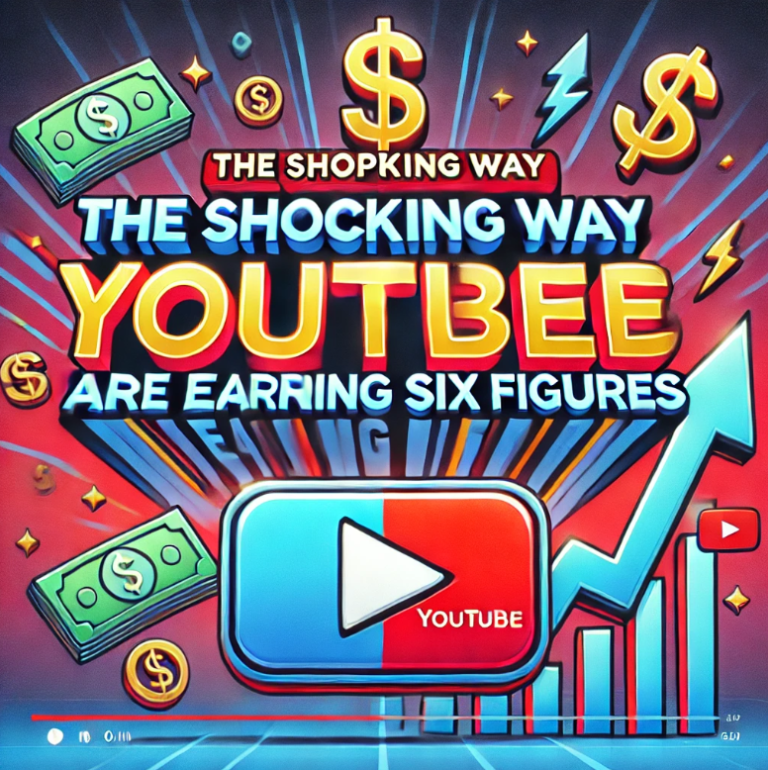When it comes to monetizing your YouTube channel, there’s no shortage of advice, tips, and supposed tricks that claim to unlock the secret to making money on the platform. However, not everything you hear is true. In fact, some of the most widely believed strategies are simply myths that can mislead creators, especially those who are just starting. In this post, we’re going to break down some of the most common YouTube monetization myths and reveal what really works to help you generate a steady income from your channel.
Myth #1: You Need Millions of Views to Make Money
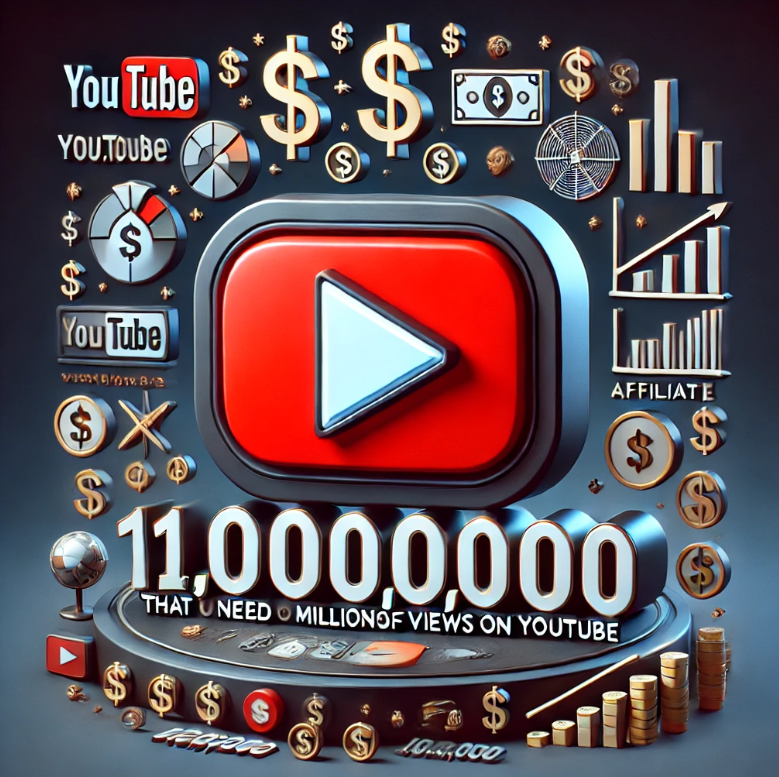
One of the most pervasive myths is that you need millions of views to make any real money on YouTube. It’s easy to see why people believe this—after all, big channels with millions of subscribers often pull in substantial revenue. But the truth is, you don’t need to go viral or hit millions of views to start earning on YouTube.
What Really Works: Focus on building a loyal, engaged audience rather than just chasing views. A smaller, more dedicated audience can be more valuable than a large, passive one. You can monetize your channel effectively through various means, even with a modest following. For instance, channels with niche content often attract a more engaged audience, making them ideal for affiliate marketing or selling products and services related to their niche. Additionally, YouTube’s Super Chat feature, channel memberships, and even Patreon can help creators with smaller audiences generate income. Sponsorships are another avenue where a dedicated but smaller audience can be highly valuable. Brands often prefer channels that engage directly with a specific demographic, even if they don’t have massive view counts. Remember, it’s not just about how many people watch your videos, but about how engaged those viewers are with your content.
Myth #2: Ad Revenue is the Best Way to Make Money on YouTube
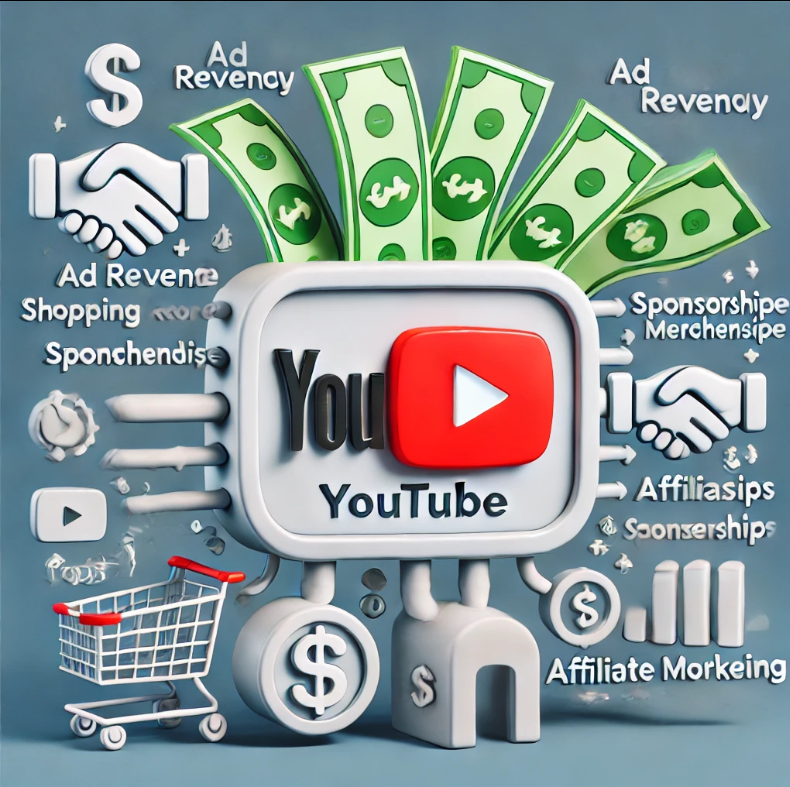
Many creators start their YouTube journey with the goal of earning money through ad revenue, thinking that running ads on their videos is the primary—and sometimes only—way to monetize their channel. While ad revenue can be a significant income stream, relying solely on it can limit your earning potential.
What Really Works: Diversify your revenue streams. Ad revenue fluctuates based on factors like the season, ad spend by companies, and even the type of content you produce. To stabilize and increase your income, consider additional monetization methods such as affiliate marketing, selling merchandise, offering online courses, or creating and selling digital products like eBooks or printables. Affiliate marketing can be particularly lucrative, especially if you promote products or services that are highly relevant to your audience. When done correctly, it not only provides value to your viewers but also creates a passive income stream. Selling your own products or merchandise is another powerful way to monetize, as it allows you to keep a larger portion of the revenue and build a brand that extends beyond YouTube. The key is to identify what your audience values and find ways to meet those needs through different monetization strategies.
Myth #3: YouTube Will Promote Your Videos if They’re Good Enough

Another common misconception is that YouTube will automatically promote your videos if they’re high-quality. While producing good content is essential, it’s not the only factor that influences whether or not YouTube’s algorithm will favor your videos.
What Really Works: Understand and leverage YouTube’s algorithm. The platform’s recommendation system is designed to keep viewers engaged for as long as possible. This means that factors such as click-through rate (CTR), watch time, audience retention, and engagement (likes, comments, shares) all play crucial roles in determining how widely your videos are promoted. To maximize your chances of getting noticed by the algorithm, optimize your video titles, thumbnails, and descriptions to be both engaging and relevant to your target audience. Make sure your content is structured in a way that keeps viewers watching from start to finish. For example, start with a strong hook to grab attention, keep the content engaging throughout, and end with a compelling call to action. Also, encourage viewers to interact with your video by asking them to like, comment, and share. These signals indicate to YouTube that your content is valuable, which can lead to increased visibility across the platform.
Myth #4: You Need to Be an Expert in Video Production
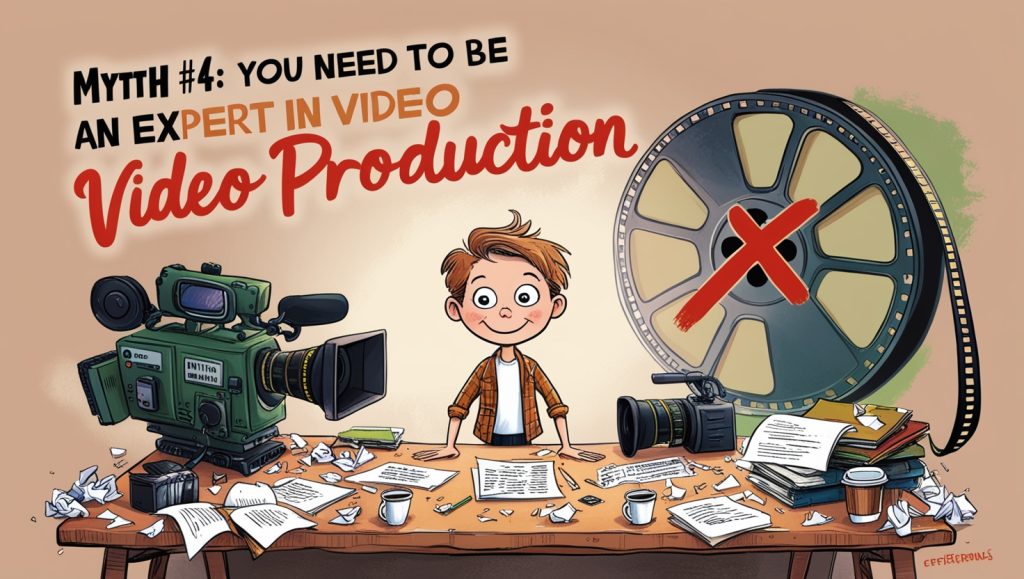
It’s easy to think that you need to have top-notch video production skills or expensive equipment to succeed on YouTube. While high production value can certainly enhance your content, it’s not a requirement for building a successful channel.
What Really Works: Content is king. Many successful YouTubers started with minimal equipment and gradually improved their production quality over time. What matters most is the value you provide through your content. Focus on creating videos that solve a problem, entertain, educate, or inspire your audience. Authenticity also plays a huge role. Viewers connect more with creators who are genuine and relatable, rather than those who seem overly polished or scripted. As your channel grows, you can invest in better equipment and software, but don’t let the lack of professional tools hold you back from getting started. Consistency, creativity, and connecting with your audience are far more important factors in long-term success than having the best camera or lighting.
Myth #5: Only Big Channels Get Sponsored

There’s a common belief that sponsorship opportunities are only available to large channels with hundreds of thousands of subscribers. However, this isn’t necessarily true. Many brands are interested in partnering with smaller channels, especially those with highly engaged and niche audiences.
What Really Works: Position your channel as an authority in a specific niche. Brands are often looking for creators who can reach a specific demographic, even if that audience is smaller in size. If you can demonstrate that your viewers are engaged and that your content aligns with the brand’s values, you can secure sponsorships regardless of your subscriber count. Start by reaching out to smaller companies or brands that align with your channel’s niche. You can also use platforms like FameBit or Grapevine, which connect YouTubers with potential sponsors. When pitching to brands, focus on the value you can offer them—whether it’s access to a dedicated audience, unique content ideas, or creative ways to integrate their products into your videos. Remember, it’s about quality over quantity when it comes to brand partnerships.
Myth #6: You Can Monetize Right Away
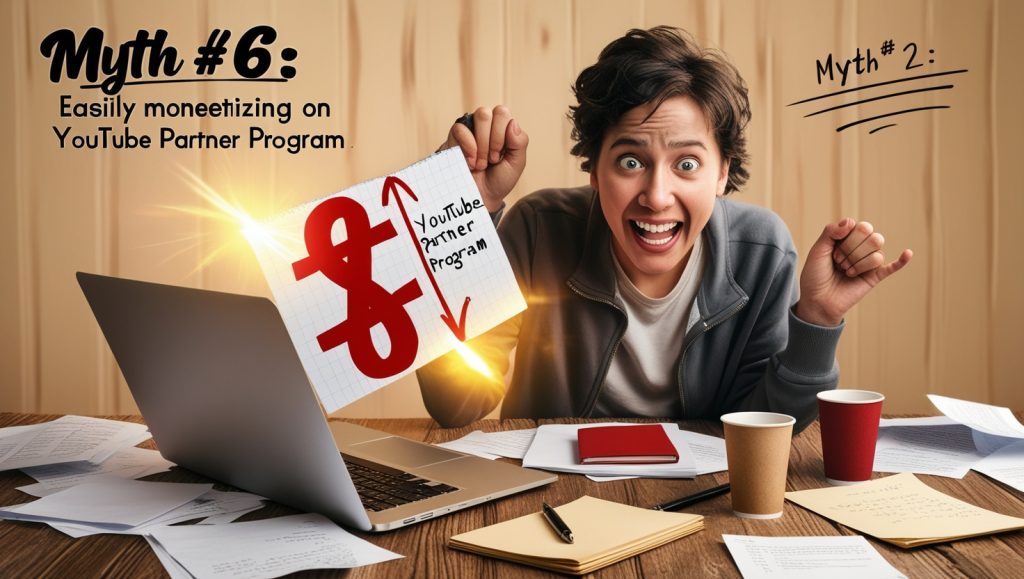
Many new creators believe that they can start making money on YouTube as soon as they upload their first video. However, YouTube has specific eligibility requirements for monetization that you must meet before you can start earning through the platform’s Partner Program.
What Really Works: Understand the requirements and work towards meeting them. To be eligible for monetization, your channel needs to have at least 1,000 subscribers and 4,000 watch hours in the past 12 months. Additionally, you need to comply with YouTube’s community guidelines and terms of service. Instead of focusing solely on monetization from the start, concentrate on building your channel and growing your audience. Create high-quality content that resonates with your target viewers, and work on increasing your watch time and subscriber count. As you build your channel, you can explore alternative monetization methods like affiliate marketing or selling products until you meet the requirements for the YouTube Partner Program. The key is patience and persistence—monetization is a marathon, not a sprint.
Myth #7: Posting More Videos Equals More Revenue

It’s easy to think that the more videos you upload, the more money you’ll make. While consistency is important, simply uploading more content doesn’t necessarily lead to increased revenue.
What Really Works: Focus on quality over quantity. Rather than churning out a high volume of videos, prioritize creating content that is valuable, engaging, and well-produced. High-quality videos are more likely to attract views, retain audiences, and encourage shares, all of which contribute to higher revenue potential. Additionally, uploading too frequently can lead to burnout, both for you and your audience. If you flood your channel with too much content, viewers may struggle to keep up and disengage. Instead, find a posting schedule that works for you and allows you to maintain a high standard of quality in your videos. It’s better to upload one great video a week than to post daily videos that lack substance or effort.
Myth #8: You Don’t Need to Worry About SEO on YouTube

Some creators believe that SEO (Search Engine Optimization) is only relevant to websites and blogs, not YouTube. However, SEO plays a crucial role in how your videos are discovered on the platform.
What Really Works: Optimize your videos for search. YouTube is the second-largest search engine in the world, and optimizing your content for search is essential for increasing visibility. Use relevant keywords in your video titles, descriptions, and tags to help YouTube understand what your video is about and to ensure it appears in search results for those topics. Research keywords related to your niche and integrate them naturally into your content. Tools like Google Trends, TubeBuddy, and VidIQ can help you find the best keywords to target. Also, consider using closed captions and subtitles, as they can improve your video’s search ranking and make your content accessible to a wider audience. The more searchable your content is, the more likely it is to attract viewers who are interested in your topic.
Myth #9: Longer Videos Automatically Lead to More Revenue
There’s a belief that the longer your video, the more money you’ll make, especially since longer videos can include more ads. While it’s true that longer videos can increase watch time and ad revenue, this approach can backfire if the content is stretched out unnecessarily.
What Really Works: Focus on delivering value regardless of video length. The length of your video should be dictated by the content, not by a desire to increase ad placements. Viewers appreciate concise, informative, or entertaining content that respects their time. If a video feels padded or unnecessarily long, viewers are more likely to click away, hurting your retention rate and, ultimately, your channel’s performance. If your video needs to be long to cover a topic thoroughly, then go for it. But never sacrifice quality for length. It’s better to have a shorter, highly engaging video than a long one that loses viewers’ interest halfway through.
Myth #10: You Can Ignore Analytics and Still Succeed
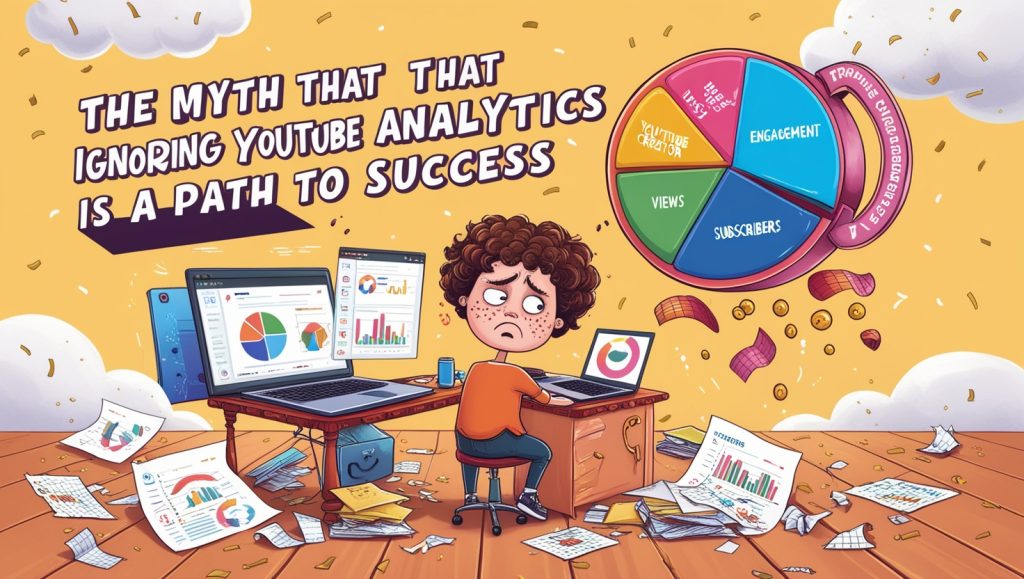
Some creators assume that as long as they keep making videos, their channel will naturally grow over time. While consistent content creation is important, ignoring YouTube analytics can mean missing out on crucial insights that could accelerate your growth.
What Really Works: Regularly review and learn from your YouTube analytics. Your analytics provide valuable data on how your videos are performing, who your audience is, and what content resonates with them. Pay attention to metrics like watch time, audience retention, click-through rate, and engagement. These insights can help you understand what’s working and what isn’t, allowing you to adjust your content strategy accordingly. For example, if you notice that viewers drop off at a certain point in your videos, you can analyze why that might be and make changes in future content. Use analytics to experiment with different types of content, video lengths, and posting times to see what yields the best results. The more you understand your audience and how they interact with your content, the better you can serve them, leading to increased growth and monetization opportunities.
Myth #11: Only Viral Content Matters

There’s a widespread belief that you need to create viral content to succeed on YouTube. While viral videos can certainly boost your channel’s visibility, relying on virality as a strategy is risky and unsustainable.
What Really Works: Focus on consistent, valuable content. Instead of chasing viral hits, concentrate on creating content that consistently provides value to your audience. This approach not only builds trust and loyalty but also creates a solid foundation for long-term growth. Viral videos might bring in a lot of views quickly, but they don’t always lead to lasting engagement or a loyal audience. By regularly posting content that addresses your viewers’ needs or interests, you’ll attract a steady stream of subscribers who are genuinely interested in what you have to offer. Over time, this loyal audience will contribute more to your channel’s success than a few viral moments.
Myth #12: YouTube is Oversaturated, and It’s Too Late to Start

With millions of creators on YouTube, it’s easy to think that the platform is oversaturated and that there’s no room for new channels to succeed. However, this couldn’t be further from the truth.
What Really Works: There’s always room for quality content. While it’s true that YouTube is a competitive space, new creators are finding success every day by bringing unique perspectives, ideas, and creativity to the platform. The key is to find your niche and offer something different from what’s already out there. Whether it’s your personality, expertise, or the way you present information, lean into what makes you unique. Additionally, YouTube continues to grow, with more people consuming video content than ever before. This means there are always new opportunities to reach viewers who are interested in your content. Don’t be discouraged by the number of channels—focus on creating quality content and connecting with your audience, and you’ll find your place on the platform.
Conclusion: Focus on What Really Works
Monetizing a YouTube channel is a complex process that requires more than just uploading videos and hoping for the best. By understanding and debunking these common myths, you can develop a more effective strategy that aligns with what actually works on the platform. Remember, building a successful YouTube channel takes time, effort, and a willingness to adapt and learn. Focus on creating valuable content, engaging with your audience, and diversifying your revenue streams. By doing so, you’ll be well on your way to turning your YouTube channel into a reliable source of income.

